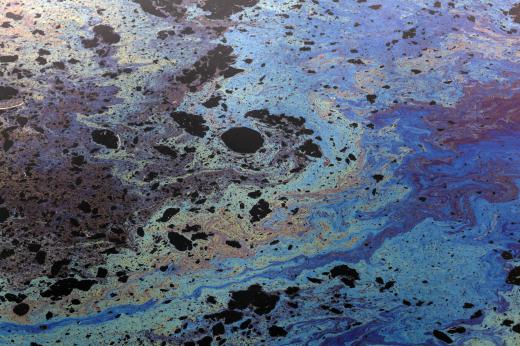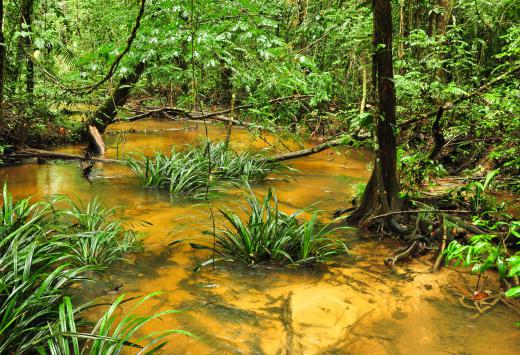What are the Different Methods of Groundwater Cleanup?
Groundwater is the water underneath the earth's surface and in the rocks and soil. When groundwater pools in large volume, an aquifer is formed. Aquifers supply wells and springs, and due to ground water flow, also eventually move into lakes, rivers and wetlands. Since groundwater accounts for 95% of the freshwater resources in the United States, groundwater resources are monitored by the Environmental Protection Agency (EPA), which governs groundwater cleanup in the event of environmental contamination. Some different methods of groundwater cleanup include bioremediation, carbon adsorption, air stripping, and the physical removal of contaminated substances.
Bioremediation is one form of groundwater cleanup. Organisms that are present at the contaminated site are given fertilizer and oxygen in order to grow stronger. The organisms eat the contamination, which allows the site to revert back to its natural state. This is often used when the groundwater contamination is an oil spill because organisms can clean up the site much faster and more cost effectively than other types of groundwater cleanup.

When the water table is low, groundwater pumping and treatment is often used since groundwater remediation may not be effective. The contaminated groundwater is pumped from the aquifer, run through a treatment system, then returned to the ground. Treatments include carbon adsorption and air stripping.
Carbon adsorption is a treatment technique that works by soaking up contaminants through porous particles. Once the contaminants are fully absorbed, the water can be reintroduced to the environment. Air stripping works by forcing the groundwater through an aeration tank that separates the groundwater from the contaminants; cleaned water then flows back to the aquifer.

Groundwater cleanup may also involve incineration. One incineration method is to burn the carbon that was used during the carbon adsorption treatments so that the contaminants present in the carbon after treatment can be destroyed. This method of groundwater cleanup is also used when there is a significant amount of soil to process and the contaminants are not a kind that can be eaten by organisms. Incineration occurs in encapsulated towers at extremely high heat in order to break down the contaminants and destroy any organic compounds present.
When the size of the contamination site and type of chemicals that need to be extracted do not lend themselves to on-site groundwater cleanup methods, the EPA will direct the contaminants be removed. This requires heavy duty front loaders and dump trucks to be brought in and the ground actually dug up and removed from the site. The materials are transported to a hazardous waste facility and disposed of under the direction of the EPA.
AS FEATURED ON:
AS FEATURED ON:












Discussion Comments
I read about another cleanup method that forms a chemical barrier inside of groundwater aquifers to prevent contamination. I think they are still studying how it works, but the article said that it could be a very effective cleanup method for plants and military bases. What they do is to inject into wells and these work to destroy any contaminants that seep into the water from chemical plants and facilities.
The good part is that it is expected to work for at least 15 years at a time. So the chances of accidental contamination is like zero. I don't know when this is going to become a popular cleanup method, but it sounds very promising.
@anamur-- I think that bioremediation is a very cheap method of cleanup. There was a contamination problem in my neighborhood. The company that was responsible for it was also responsible for the cleanup.
They took samples from groundwater wells in all the neighborhoods surrounding the site and infused a mixture for bioremediation in the wells. I think it was like a molasses and vegetable oil solution or something. They continued to do groundwater sampling for months to make sure the solution was working.
It sounded like a very easy thing to do. I doubt that it is very costly, but this contamination was very minor and not too dangerous.
How much does it cost to employ these methods of cleanup? Is it cheaper to cleanup afterward or to prevent contamination?
Another question I have is, if the groundwater in an area is contaminated because of a factory and waste materials from the factory, is the factory responsible for the cleanup or the EPA?
Post your comments